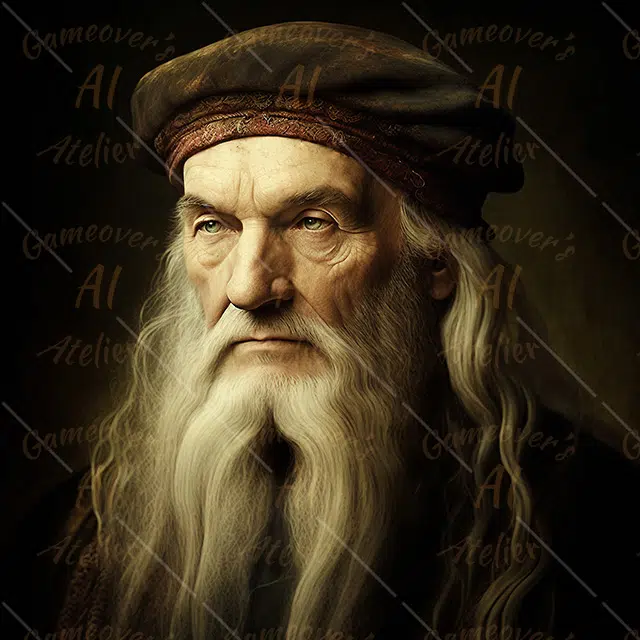
The Genius of Leonardo Da Vinci
Leonardo Da Vinci, renowned as one of the greatest polymaths in history, continues to captivate the world with his unparalleled creativity and intellectual prowess. Born in Vinci, Italy, in 1452, Da Vinci’s genius transcended traditional boundaries . Making significant contributions to art, science, anatomy, engineering, and more. His legacy not only shaped the Renaissance but continues to inspire innovation even in the age of artificial intelligence (AI).
Artistic Mastery:
Leonardo Da Vinci’s artistic brilliance remains unparalleled. From the enigmatic smile of the Mona Lisa to the dynamic composition of The Last Supper . His paintings are timeless masterpieces that evoke emotion and intrigue. His innovative techniques . Such as sfumato (a smoky, soft shading technique), revolutionized art, creating depth and realism previously unseen in his era.
In the context of AI, researchers and artists are now leveraging machine learning algorithms to analyze Da Vinci’s works. AI algorithms can dissect brush strokes, analyze color palettes, and even create original artworks inspired by his style. This fusion of art and technology not only preserves Da Vinci’s legacy but also pushes the boundaries of what is creatively possible in the digital age.
Scientific Inquiry:
Beyond art, Da Vinci’s insatiable curiosity led him to explore various scientific disciplines. His detailed anatomical sketches, such as the Vitruvian Man, were far ahead of his time and laid the foundation for modern medical illustration. His studies of fluid dynamics and optics anticipated discoveries made centuries later, showcasing his prophetic scientific vision.
Today, AI plays a pivotal role in advancing scientific research. Machine learning models are used to simulate complex biological systems, analyze vast datasets in medical research, and even predict the behavior of natural phenomena. Just as Da Vinci used observation and experimentation to uncover scientific truths, AI algorithms are now aiding researchers in uncovering new insights and accelerating innovation across disciplines.
Engineering Feats:
Da Vinci’s engineering designs were equally revolutionary. His sketches of flying machines, including the ornithopter and parachute, demonstrate his foresight into aerodynamics and mechanical engineering principles. While many of these designs were conceptual, they paved the way for future innovations in aviation and transportation.
In the realm of AI, engineers are developing autonomous systems inspired by Da Vinci’s designs. From self-piloting drones to adaptive robotics, these technologies are reshaping industries and creating new possibilities for human-machine collaboration. Just as Da Vinci envisioned machines that could emulate the capabilities of living organisms, AI is enabling the development of intelligent systems that learn and adapt in real-time.
Legacy and Influence:
Leonardo Da Vinci’s enduring influence extends far beyond his own time. His notebooks, filled with sketches, scientific diagrams, and philosophical musings, continue to be studied and revered by scholars worldwide. His interdisciplinary approach to knowledge, blending art and science seamlessly, serves as a model for contemporary thinkers seeking to innovate across boundaries.
In the age of AI, Da Vinci’s legacy serves as a guiding light for creators and researchers alike. As AI technologies continue to evolve, they are increasingly being used to interpret, analyze, and expand upon Da Vinci’s work. Whether through digital reconstructions of lost artworks or AI-driven simulations of his engineering designs, technology is preserving and extending the reach of Da Vinci’s genius into the future.
Conclusion:
Leonardo Da Vinci’s genius remains an unparalleled phenomenon in human history. His contributions to art, science, and engineering laid the groundwork for centuries of innovation and discovery. In the age of AI, his legacy continues to inspire new forms of creativity and technological advancement. By harnessing the power of artificial intelligence, we not only celebrate Da Vinci’s achievements but also ensure that his visionary spirit endures in the digital era and beyond.
As we reflect on Da Vinci’s life and work, we are reminded that true genius knows no boundaries. Through art, science, and the transformative potential of AI, Leonardo Da Vinci’s legacy lives on, inspiring us to push the limits of what is possible and continue exploring the mysteries of creativity and innovation.
—
This article aims to blend historical insights with contemporary themes of AI and creativity, optimizing for SEO by integrating key phrases related to Leonardo Da Vinci, his contributions, and the relevance of AI in today’s context.
